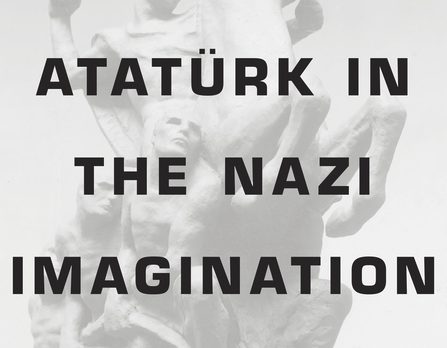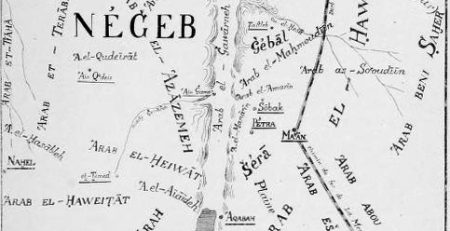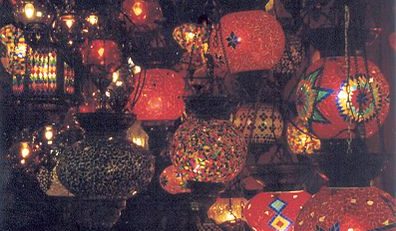“Turkish Blueprints”
Ihrig, Stefan. Atatürk in the Nazi Imagination. Cambridge, Massachusetts: The Belknap Press of Harvard University Press, 2014, 311 pp., $29.95. ISBN 978-0-67436-837-8
Reviewed by: Arie M. Dubnov
School of History, University of Haifa, Israel
Experts on Turko-German relations and historians of the Holocaust and the Armenian Genocide are familiar with the debate: did Adolf Hitler actually utter the words “Wer redet heute noch von der Vernichtung der Armenier?” (“Who still talks nowadays about the annihilation of the Armenians?”) in his infamous Obersalzberg speech to the Wehrmacht commanders in late August 1939, on the eve of the Nazi invasion to Poland?; Or, given the fact the veracity of this statement cannot be confirmed, it was actually an Armenian propaganda invention? Stefan Ihrig’s new careful, thoroughly researched and thought-provoking monograph avoids entering into this political minefield. And yet, it shows convincingly that from its nascence to its ascent to power, the Nazi movement looked eastwards, to Mustafa Kemal Atatürk’s Turkey, in search for political blueprints, precedents and exemplary figures to follow and imitate. To be sure, the notion that Hitler and his close peers were inspired by other contemporaneous authoritarian leaders is far from new. A rich body of literature, arguing that the Führer was a careful student of Il Duce, Benito Mussolini, testifies to the way in which villains can find their own role models in other villains. The novelty in Ihrig’s book is that it forces us to turn our gaze eastwards, to Europe’s edges, revealing enthusiasm, even a Türkenfieber (“Turk fever”) among German ultranationalists and Nazi ideologues who turned the Kemalist revolution into an inspiration, and turned to Mustafa Kemal Atatürk himself – into a role model.
As its title suggests, Ihrig’s book offers a history of perceptions, inspirations and discourses about Turkey, not a political or diplomatic history of Turko-Nazi relations, nor an assessment of the degree to which the Kemalist displayed fascist tendencies. It is a book about heightened rhetoric and hyperbolic nationalistic media, about second-rate ideologues, public opinion designers and sensationalist journalists who made Turkish affairs ever present and constantly made comparisons, constructing an imaginative affinity (“twinning” in Ihrig’s words, 201-06) between German volkism and the Turkish rejuvenation. Crucially, for Ihrig these perceptions do not reveal the persistence of cultural and racial attributes one finds in German Orientalism or Orientalistik, the late imperial scholarly tradition carefully traced by Suzanne Marchand.1 Quite on the contrary: Ihrig suggests that there was something radically new in the way the Nazis perceived the Young Turks and the Kemalist revolution. “The old days of looking at Turkey through Orientalist eyes were long past,” Ihring argues. “For the Nazis, Turkey was not the old East, but a standard bearer for the modern nationalist and totalitarian politics that they wished to bring to Germany.” (7) Contra-Said, Ihring argues that what we find in Weimar and later during the Third Reich is actually a case of “de-Orientalization” and “Germanification” of Turkish topics (27). The Nazis, in other words, were not obsessed over Turkey because it was the quintessential non-European “Other.” Quite on the contrary: they were fascinated by what one feverish nationalist orator described in 1938 as “the great and bold ascent of Anatolia to new strength, might, and prominence,” (136) because they were searching for precedents and recipes to bring about their own nationalist utopia. Hitler, who received a Turkish delegation to celebrate his birthday on April 20, 1939, summarized it in simple words: “our model was Turkey” (116).
The voyage Ihrig embarks on begins in Spring 1919, with Mustafa Kemal’s landing in eastern Anatolia, the event signifying the outbreak of the Turkish War of Independence. The nationalist press in Germany was fascinated by the events throughout the four long years of the conflict, often putting the coverage of these distant events on their front pages, making Turkey ever-present in the German public sphere. In the eyes of frustrated German nationalists, humiliated by the Treaty of Versailles that imposed a painful reparation payments and forced Germany to concede territory, there was much to be impressed by: Kemal’s ability to organize scattered, local resistance groups to check Greek expansionist dreams and prevent Turkey from turning into a midget state around Ankara; and not less important –the Turks’ success in revising treaties signed by the Great Powers in Paris and imposed on them. It was easy to portray the events in epic colors, as a David-versus-Goliath clash, with Turkey cast as the anti-Entente David in the story. Being a source of discomfort, the fact the Turks relied on Soviet aid in their struggle was tactfully downplayed. In other cases, the Bolshevik-Kemalist connection was used favorably, as a means to erect a positive image of Mustafa Kemal as both nationalist and socialist. Loaded phrases and hysterical vocabulary employed to discuss German issues – such as “stab-in-the-back,” “fifth column,” “rape of a nation,” and so on (26, 34, 73) – were also used in items on Turkey, thus contributing to the “Germanification” of the Turkish events. Quickly enough, this “hypernationalist pornography” was followed by an explicit demand to draw “Turkish lessons for Germany”.
This perceived parallelism and search for precedents, chapter 2 argues, provides the backdrop against which Hitler’s Beer Hall Putsch of 1923 would be better understood. It was often argued that Hitler was simply emulating Mussolini’s 1922 March on Rome. Ihrig boldly divorces himself from the conventional narrative. The failed putsch, he argues, had been inspired by Kemalism not less than it was by Mussolini, and a very distinct “pro-putsch,” “Turkish atmosphere” (72, 105) was in the air in Munich of late 1923. Ihrig gleans this atmosphere by reviewing the constant references to Turkey in the German press, and in particular in conservative and Nazi newspapers such as Kreuzzeitung and Heimatland, as well as from the Hitler Trial minutes published in 1924 (92).
Chapters 3 & 4 pick up the story after 1933, once Hitler was no longer a “drummer” of a nascent movement, as Ian Kershaw called him, but an undisputed Führer imposing his will on a vast country and utilizing a sophisticated state apparatus. Symbolically, the year of the Machtergreifung (the Nazi seizure of power) was also the tenth anniversary of the Turkish Republic, providing Nazi propagandists with the perfect excuse to kick-off Turkish festivities stressing the resemblance between the two states. Analyzing in great detail the choreography of the SA march in front of the Turkish Embassy in October 1933 and the special treatment the deceased Turkish ambassador to Berlin received from the Nazi authorities, Ihrig shows that Turkey received an exceptional treatment, with the Germans going beyond and above what the diplomatic protocol would have required (120-126). Far more important, he reveals how ideologically flexible the Nazis were when they had to find a way to include the Turks in their racial worldview. Turkey’s European aspirations, its language reforms and cultural reconstruction, not to mention Atatürk’s well-proportioned, robust and athletic physique, made the job easier. Fused together, such attributes allowed Nazi propagandists to treat Turks as Aryans, or at least as “racially related” to the Aryans, and to stress Turkey’s “Europeanness.” Sculptured Atatürk busts and hagiographic biographies and school textbooks that meant to affirm the perceived similarity between the “Turkish Caesar” and the German Führer were effective means to achieving the goal. The move was accompanied, chapter 5 shows, with a portrayal of Islam as a foreign cosmopolitan religion and an illness which the old decaying Ottoman order suffered from and the new, anti-clerical and centralized Turkish state got rid of.
More than cultural reconstruction, the real “miracle of Ankara,” however, had to do with Turkey’s solution to its “minority problems.” Given the fact the Armenian Genocide was a prime media topic and that it was mentioned in many of the Atatürk biographies, Ihrig concludes that there is no reason to assume Germans did not know about it (176, 182-3, 206-08). Moreover, a strong anti-Armenian sentiment, originating in late-nineteenth discourses, drew parallels between Ottoman Armenians and Jews. State aggression directed against the Armenians in 1915 as against the Anatolian Greeks in 1921-22 was not disguised but treated by the Nazis as legitimate measures needed to secure Turkey’s ethnic integrity. Much more: they made the ideal of a racially homogenous state appear less utopian; Turkey offered “a tempting precedent” (207). Nazi opinion-makers such as Hans Tröbst, a Kemalist mercenary in his past who is one of the key figures in the study, preferred to think of Greco-Turk solution not as a mutual exchange of population but as a one-sided expulsion of the Greeks by the Turks. The Turks, in other words, were perceived as purifying their bodypolitic from the disloyal and alien elements. Read against this backdrop, the fact that Heinrich Himmler, the future head of the Gestapo, contemplated the idea of emigrating and starting a new life in Anatolia in early 1920 appears less surprising.
There is much to be admired and praised in Ihrig’s study. Ihrig arguments rest on a dazzling command of evidence, offering a very detailed yet accessible narrative. Thanks to Ihrig’s intervention, Hitlerism and the Führerprinzip could no longer be fully intelligible without its Turkish dimension. The current reviewer found the Plutarchian exercises made during the Third Reich in writing Atatürk and Hitler’s biographies in tandem, as parallel lives, to be exceptionally illuminating. It not only made the two movements intertwined but turned the “shining star” of the east into Hitler’s forerunner, if not even making Atatürk part of Hitler’s biography. If Ihrig is correct in his reconstruction of the Turkish background to the Munich putsch, we have a better key for the understanding of a crucial transformation of the nascent Nazi movement, for only once the putsch had failed did Hitler realize that ascend to power could be more likely achieved through “conventional” legitimate parliamentary means, rooting as a party in the existing political system. One is tempted to utilize Robert Paxton’s five-stage model of fascism to rephrase Ihrig’s argument as follows: Hitler turned his attention from the shining example of the Kemalist revolution in the east southwards, to Mussolini and the Italian fascists, only when the Nazis moved from stage 1 – the creation of a fascist movement – to stage 2 – turning into a political party that works its way up through the pre existing political channels.2
Ihrig allows us to move beyond discussions that read the rise of Nazism only in a German context, divorced from the other authoritarian states that came to fruition in interwar years, and appreciate the strong desire of German nationalist to see themselves as part of a larger wave of völkisch revival and anti-Leaguism. The Nazi ideology that comes out from this study is much more eclectic, not to say syncretistic: dogmatic as they were, the Nazis were remarkably flexible once they had to make room for the Turk. Writing against the backdrop of contemporary xenophobic chauvinism directed against the Turkish diaspora in Germany, Ihrig is a historian warning us from anachronism and essentialism, reminding us that contrary to gutter slogans used by neo-Nazi today or simplistic psychologisms, there is no “eternal Turk” in German national psyche. There are shifting perceptions of discourses, changing and evolving over time.
There are a few instances in which Ihrig overstress his argument, however. He insists that the Turko-German parallelism is a theme dominating the Nazi imagination during the entire period (1919-1945), though he admits that there are no reference to New Turkey in Mein Kampf and Hitler’s other writings and brings very few evidences to show that during the crucial decade of 1923 to 1933, i.e. after the putsch had failed and before the Nazis came to power, the Nazis were obsessed over Turkey. Ihrig’s desire to present the Nazi discourse on Turkey as a product of “de-Orientalism,” seems to rest on a somewhat exaggerated notion of a clear-cut break with earlier cultural perceptions, visions and stigmas. Hitler, Ihrig himself shows, was an avid reader of Karl May, whose novels offer paradigmatic examples of a very “old” type of colonial-type of Orientalist kitsch. Nor does everything culminate in the single, magisterial figure of Atatürk. At least as far as autobiographies go, it seems that the ethnic cleansing that may have pushed future Nazis like Rudolf Höss, the future SS-Obersturmbannführer and Auschwitz commander, had been developed in the battlefields of WWI, before the Kemalist revolution, and disappeared later.3 One must be also more cautious when reading post-1933 Nazi speeches praising Turkey, especially ones given in diplomatic events honoring Turkish delegates. Compliments do not cost much and are standard devices for any savvy diplomat, Hitler included, seeking to strengthen bonds between states. Ultimately, as the final chapter of the book demonstrates, the lofty rhetoric about a spiritual affinity between Kemalist Turkey and the Third Reich failed to translate itself into political action that had any substantial impact on the Nazis once the war broke out. There was no Turko-German Sonderverhältnis (“special relationship”), despite all the well-orchestrated Nazi ceremonies, nor was there a message powerful enough to prevent the Turkish politicians from declaring war on Germany, on February 1945, probably in order to gain access to the UN.
Even if we put aside the exercises in conceptual hair-splitting distinguishing “genocide” and “ethnic cleansing” that play a major role in contemporary historiography,4 dealing with the question of forced population transfer and its “Turkish origins” Ihrig trots a precarious field, which he leaves somewhat underdeveloped. After all, the notion that transfer of ethnic minority groups is justifiable to secure the delimitation of state frontiers was neither a Kemalist nor a völkisch principle, but the basic principle laid down in the Lausanne Treaty (1923), done under the auspices of the Great Powers and given the blessings of the League. To much extent, such “fantasies of ethnic unmixing,” to use a phrase coined by Matthew Frank, was an integral component of interwar liberal imagination as well.5 Ihrig approaches the subject somewhat differently. He relies almost exclusively on mass-media sources and returns to Joseph Boris Schechtman, the Russian-Jewish Revisionist who authored a classic study of population transfers in 1946,6 adopting the view that the Greco-Turkish population exchange provided the Nazis with a blueprint for their own population movements schemes. Ihrig’s exhaustive survey of the German press seems to suggest, not surprisingly, that the Nazis preferred to depict the Lausanne Treaty – very much like the Turkish remilitarization of the Straits in 1936 more than a decade later – as the proof that a strong political will has the power to overturn the humiliating terms imposed on Turkey earlier, at the disdainful Treaty of Sèvres, thus drawing a parallel with the terms imposed in Germany in Versailles. Yet the fine line distinguishing to two evils – forced population removal and systematic annihilation – remains blurred in Ihrig’s analysis. Did the Turkish blueprint include both?
The question remains open. What is clear, however, is that transfers, one of the ingredients in the perceived Turkish blueprint, can easily turn into a double-edged sword. Naturally enough, Ihrig shows, the same German nationalists who were enthusiastic supporters of the population exchange formula were quick to grasp that the basic principle laid down in Lausanne could provide a model for the solution of the “German Question” in Central and Eastern Europe. Fast-forward to 1945, this is pretty much what happened.7
1 Marchand, Suzanne L. German Orientalism in the Age of Empire: Religion, Race, and Scholarship. Cambridge: Cambridge University Press, 2009.
2 Paxton, Robert O. “The Five Stages of Fascism.” The Journal of Modern History. 70, no. 1 (1998): 1-23; Further developed in idem, The Anatomy of Fascism. New York: Knopf, 2004.
3 Höss, Rudolf. Death Dealer: The Memoirs of the SS Kommandant at Auschwitz. Translated by Andrew Pollinger. edited by Steven Paskuly Buffalo, N.Y.: Prometheus Books, 1992.
4 A conceptual discussion developed in Naimark, Norman M. Fires of Hatred: Ethnic Cleansing in Twentieth-Century Europe. Cambridge, Mass.: Harvard University Press, 2001.
5 Frank, Matthew James, “Fantasies of Ethnic Unmixing: Population Transfer and the Collapse of Empire in Europe.” In Refugees and the End of Empire: Imperial Collapse and Forced Migration in the Twentieth Century, edited by Panikos Panayi and Pippa Virdee. Houndmills, Basingstoke, Hampshire: Palgrave Macmillan, 2011, 81-101.
6 Schechtman, Joseph B. European Population Transfers, 1939-1945. New York: Oxford University Press, 1946. These questions were picked up more recently in the works of Eric Weitz. See in particular Weitz, Eric D. A Century of Genocide: Utopias of Race and Nation. Princeton, NJ: Princeton University Press, 2003 as well as the more recent collection Bartov, Omer, and Eric D. Weitz, eds. Shatterzone of Empires Coexistence and Violence in the German, Habsburg, Russian, and Ottoman Borderlands. Bloomington: Indiana University Press, 2013.
7 Frank, Matthew James. Expelling the Germans: British Opinion and Post-1945 Population Transfer in Context. Oxford: Oxford University Press, 2007.






Leave a Reply